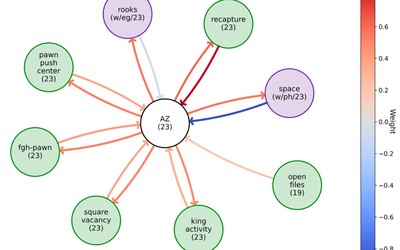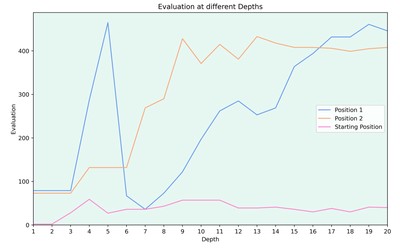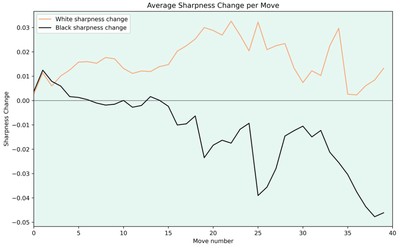
Norway Chess 2024 in Graphs
I always enjoy taking a closer look at top tournaments, but going through each game takes a lot of time. So I try to give a good overview of the open and women's sections with various graphs.Similarly to my post about the Candidate’s tournament, I thought that it’d be interesting to analyse the Norway Chess tournament and see what insights can be gained from taking a closer look at the games with engines.
I analysed both the games of the open and women's section. I first show the graphs for the open section and after that I show the graphs for the women's section.
Open
Scores
The scoring is a bit strange in Norway Chess due to the armageddon games. I tried to separate them in the graphs in order to highlight where the players scored their points. The crossed sections of the bars show the armageddon scores and the classical games are counted with 3 points for a win and 1 point for a draw.
Carlsen scored more points than Nakamura in classical and armageddon to win the tournament. But both scored +2 in classical, so with the usual scoring, they would’ve been tied on points in a classical tournament.
It’s also interesting to see that Pragg did so much better with White compared to Black. Also, Firouzja was very strong in the armageddon games.
Individual Moves
I find it very insightful to not only look at the results, but to see what the engine thinks about the individual moves. Note that all the following graphs are just taken from the classical games.
Firstly, one can look at the number of inaccuracies, mistakes and blunders.
It’s interesting to see that Nakamura made quite a lot of inaccuracies, but he didn’t lose a game. This graph also shows that Ding was having a rough tournament.
The following graph shows the percentage of moves where each player was much worse (< -1 according to Stockfish), slightly worse (-1 to -0.5), equal (-0.5 to 0.5), slightly better (0.5 to 1) and much better (>1).
The most striking thing is Nakamura’s bar. He was never much worse and had many moves where he was much better. Carlsen on the other hand was only for a few moves much better in the whole tournament. This shows that in his three wins, his opponent’s resigned quickly after making mistakes.
Another interesting thing to look at is the comparison between the number of games where players were clearly worse and the number of games that they lost.
Again, it’s amazing to see that Nakamura was never worse and Carlsen was also only worse in one round (his loss against Pragg). On the other end, both Caruana and Ding were clearly worse in 4 of their games, but Caruana managed to save 2 of them and Ding lost all 4.
The same can also be done for the number of games where the players were much better and the number of their wins.
Like the graph of the worse games, this graph shows that something in Ding’s game was lacking. He was clearly better in 2 games but couldn’t convert any of them. On the other hand, Pragg and Carlsen were both clinical and won all games in which they had a big advantage.
If you enjoy this post, check out my Substack to get informed about every new post.
Sharpness
Finally, I wanted to look at the average sharpness change per move. In theory, this should show how much risks the players have taken. But when only looking at games from one tournament, mistakes have a big influence on the data, so it might be a bit misleading.
Intuitively, it makes sense that Firouzja played the sharpest chess. But all sharpness values are quite small, so there wasn’t a big difference between the players.
Women
I’ll look at the same graphs again for the Women’s section. Again, all the stats about the moves are only taken from the classical games.
Scores
Again, the crossed section of the bars is the score from the armageddon games and the classical games are counted with 3 points for a win and 1 point for a draw.
As in the open section, the armageddon scores didn’t change the final order of the players. Also Ju Wenjun scored +3 in the classical and Muzychuck +2, so Ju Wenjun would have also won a “normal” classical tournament outright.
Individual Moves

This graph shows clearly that Ju Wenjun and Muzychuck almost never had a worse position in the entire classical tournament. On the other hand, Vaishali and Humpy Koneru had a lot of much worse positions.
The inaccuracies, mistakes and blunders are very interesting for this tournament.
At first I thought that I must have made a mistake somewhere, since Ju Wenjun had so many blunders. But then I looked into it a bit more and saw that almost all of them came from her game against Vaishali in round 6. They had a complicated ending with no time on the clock (note that there was only a 10 second increment after move 40). The Lichess analysis graph shows how wild the game was:
This shows that the stats for a single tournament can be influenced quite a lot by single games. This game also explains where many of Vaishali’s blunders in the tournament come from.
Looking at the number of worse and lost games is again quite interesting.
This shows that a big part of Ju Wenjun’s tournament victory was that she held all here worse positions. Muzychuck managed to be only worse in one game which she held, which is very strong.
Looking at the number of games where the players were better and the number of won games shows again how well from a practical point of view Ju Wenjun played.
It’s striking that Ju Wenjun and Cramling had the same number of better games, but Ju capitalised on all her chances and Cramling didn’t win a single classical game. That meant that Ju had the most classical wins while Cramling had the least.
Sharpness
Finally, we come to the average sharpness change for the players.
Again, I’m not too sure what to make of this graph. Most players are pretty similar apart from Ju Wenjun and Cramling. I can imagine that Cramling’s sharpness is so high because she made quite a few mistakes in the tournament.
Conclusion
That was a lot of graphs!
I plan to take a closer look at the armageddon games over the years in Norway, so I didn’t include any stats on them.
I hope you enjoyed all the stats and if you have any suggestions, please let me know.
More blog posts by jk_182

Concepts Discovered by AlphaZero
Looking at a paper from DeepMind about concept discovery and transfer
Using Stockfish to automatically find Tactics Puzzles
Can an engine find a tactical puzzle by itself?
Analysing Armageddon Games: Time Usage, Scores and Sharpness
Taking a closer look at armageddon games from Norway Chess